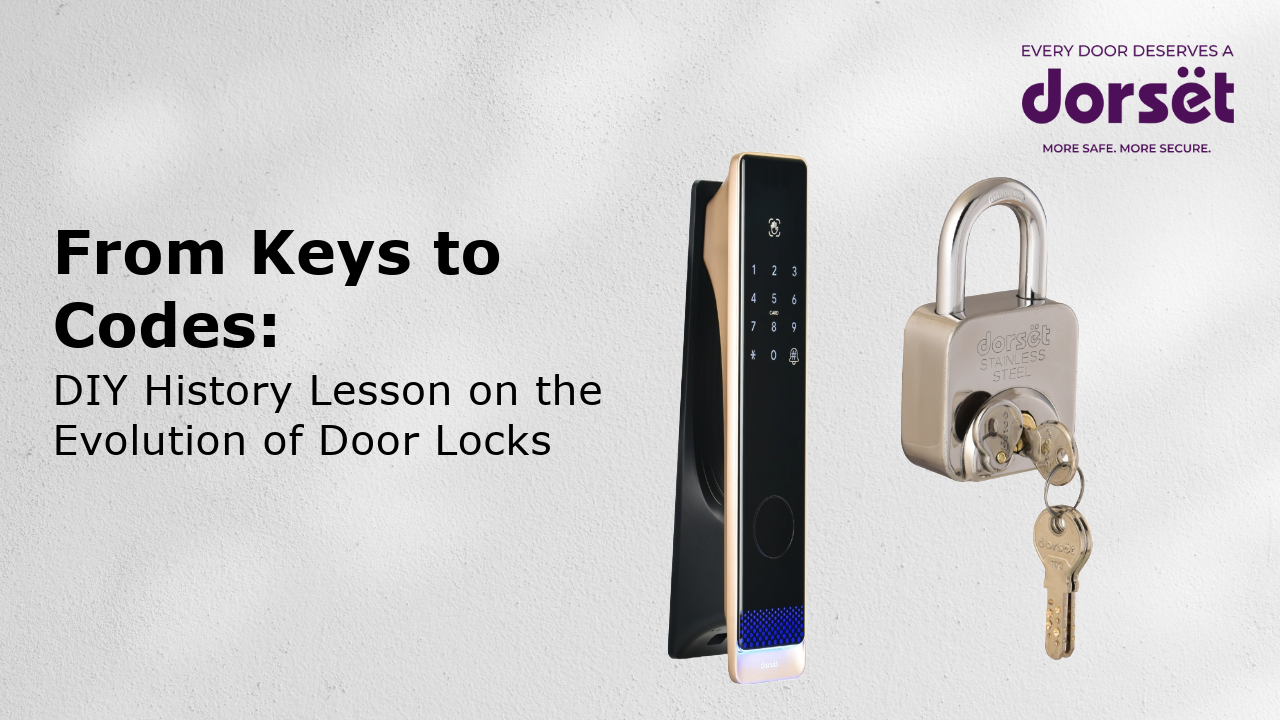
The humble door lock has come a long way from its ancient origins to the advanced digital systems of today. As you go about your daily routine, tapping your fingerprint on a scanner or entering a PIN code, you're becoming a part of the latest chapter of a fascinating security story that spans thousands of years. Let's take a journey through time to understand how we arrived at today's cutting-edge digital locks and what this evolution means for your home security.
Ancient Beginnings: The First Locks
Your security concerns today aren't so different from those of ancient Egyptians around 4,000 years ago. They created the first known mechanical locks: simple but ingenious wooden pin tumbler designs. These early locks used a wooden post attached to the door that fit into a horizontal bolt. The bolt contained a set of openings filled with pins. When a large wooden key with pegs matching the pin pattern was inserted and lifted, the pins would rise, allowing the bolt to move.
While primitive by today's standards, these locks represented a revolutionary advancement in privacy and property protection. Imagine the sense of security that came from knowing your possessions were protected by technology that few could bypass!
The Middle Ages
As we moved into medieval times, locksmithing evolved into a highly respected craft. Blacksmiths began creating intricate iron locks that were both functional and decorative. The ward lock became popular during this period. You might recognise its large, ornate keys that had to navigate through various obstructions (wards) inside the lock mechanism.
What's fascinating about this era is that locks became status symbols. The complexity and artistry of your door lock signaled your wealth and standing in society. The more elaborate the key and lock, the more important the person or the valuables behind the door were perceived to be.
Industrial Revolution
The 1800s brought about mass production, and suddenly, the concept of DIY installation of locks came into being. You could purchase standardised parts and install your door locks and handles yourself. Companies began producing locks for the average homeowner to install, and increasingly making things "DIY" friendly.
This period saw the invention of the lever tumbler lock by Robert Barron in 1778, followed by Jeremiah Chubb's detector lock in 1818. Linus Yale Sr. and Jr.'s pin tumbler lock was patented in 1848, and is still the basis for many mechanical locks today.
For DIY enthusiasts of this era, upgrading your home security meant:
- Learning how to measure door dimensions correctly
- Understanding different lock types and their applications
- Mastering basic installation techniques with simple tools
- Performing routine maintenance like lubrication and cleaning
The 20th Century
The next major leap didn't come until the mid-20th century when electronics entered the picture. The 1970s saw the first electronic keypad locks in commercial settings, eliminating the need for physical keys altogether. Hotels were early adopters of card-based electronic locks in the 1980s, revolutionising access management for properties with high turnover.
Suddenly, DIY meant dealing with wires, batteries, and circuits and not just metal parts.
For the home improvement enthusiast, this era brought new challenges:
- Basic electrical knowledge became necessary for installation
- Battery replacement and system testing became part of regular maintenance
- Troubleshooting expanded beyond mechanical issues to include electrical problems
- Security became a system rather than just a single lock point
The Digital Revolution
And here we are today, in the age of smart homes and digital security. Modern DIY home security has transformed dramatically. You're no longer just installing a lock, you're setting up an ecosystem. A smart lock for door offers multiple access methods, from fingerprints and passwords to mobile access and RFID cards, often in the same device.
The DIY setup of a smart door lock now includes:
- App setup and configuration
- Integration with other smart home systems
- Firmware updates and digital maintenance
- User management (adding family members or temporary access for guests)
- Network security considerations
Take our DG905 model with its integrated video camera for example. It doesn't just lock your door, it lets you see who's there. Or consider the DG204 PRO with its seamless integration with electric doorbells. These aren't just locks, they're comprehensive security systems that you can install and configure yourself.
What This Evolution Means for Your Home
Modern digital locks like our DG905 offer security that addresses problems that persisted for centuries in traditional locks:
- No physical keys to lose or duplicate: Traditional keys can be copied at any hardware store
- No lock picking vulnerability: Digital authentication can't be manipulated with picks and tension wrenches
- No "bumping" weakness: A common technique to defeat traditional pin tumbler locks
- Remote security management: Monitor and control your lock from anywhere
The Future Is Already Here
The story of locks is, in many ways, the story of human need for security. From wooden pins to biometric scanning, each innovation has been built upon the last, creating increasingly advanced barriers between our valuables and those who might take them.
The beauty of modern digital locks is that advanced security no longer requires advanced installation skills. We've designed our products with the DIY enthusiast in mind. They are comprehensive, yet user-friendly.
The key is no longer just in your pocket, it's in your fingerprint, your phone, and your personal code. Welcome to the future of DIY home security!